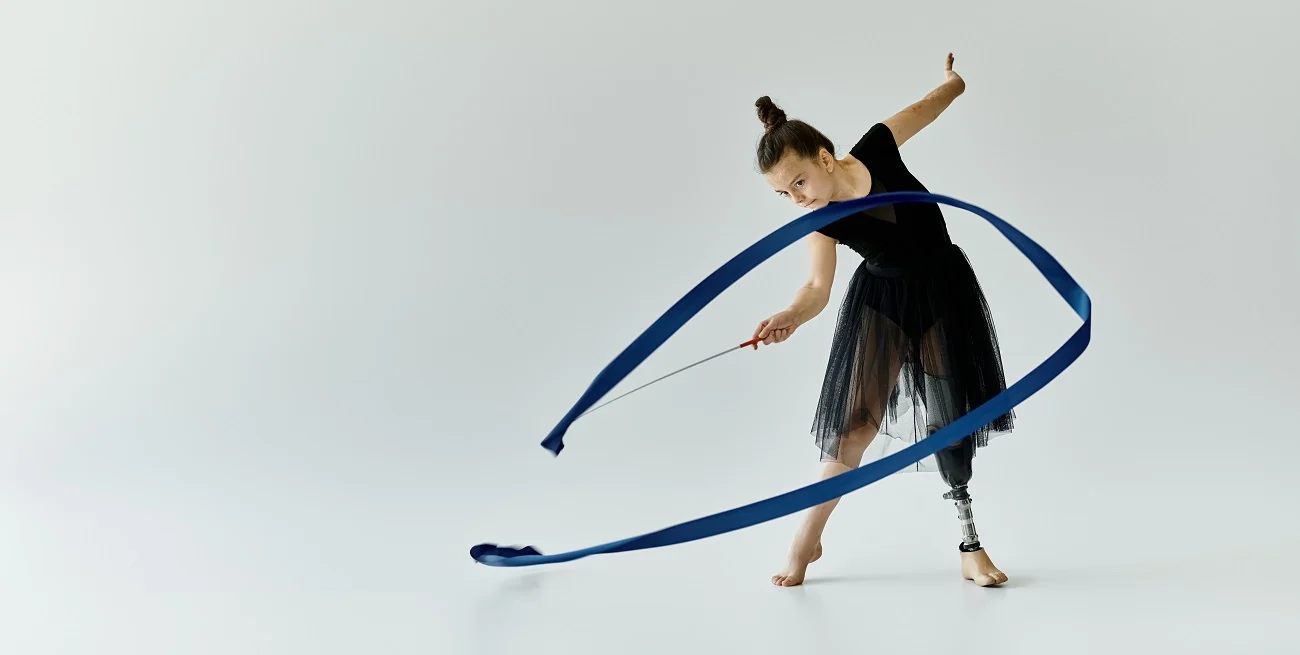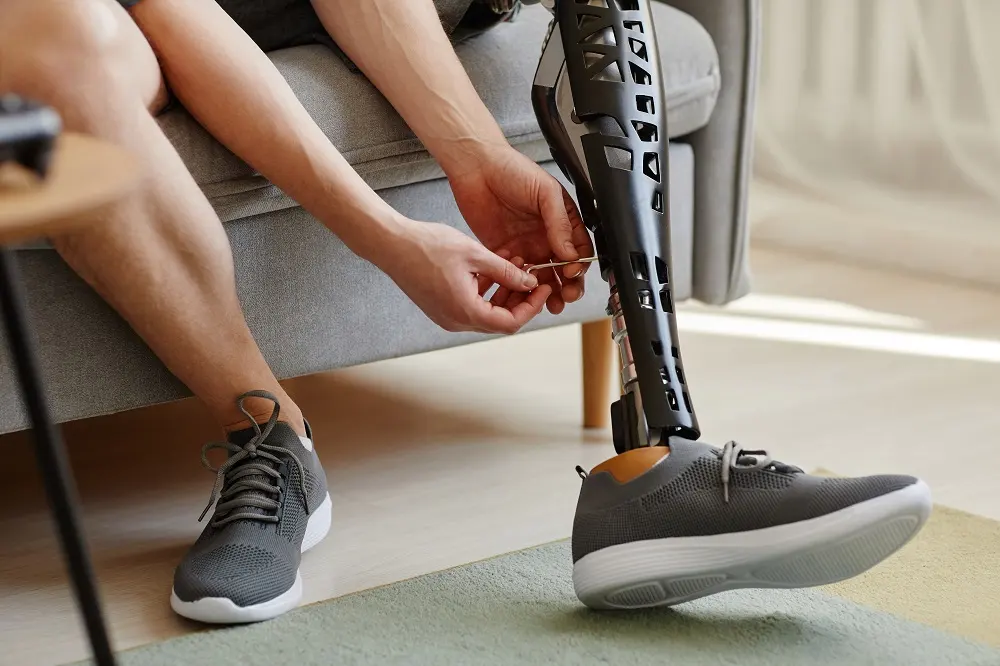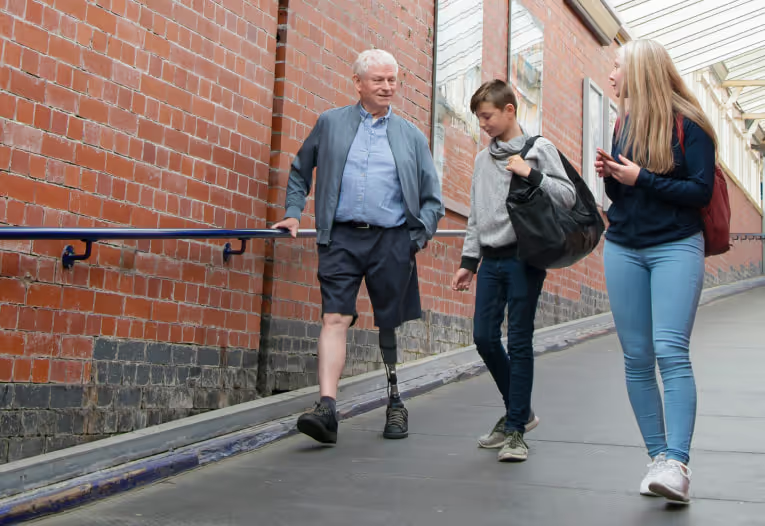Dancing is a beautiful example of human expression. Unfortunately, many amputees question whether dancing is still possible.
At PrimeCare, we craft custom lower limb prosthetics throughout New Mexico, engineering freedom for every step, spin, and leap. Our specialists are honored to collaborate with dancers from children mastering their first ballet positions to adults reclaiming the dance floor after amputation. We’re here to guide you through every step to ensure you feel confident on the dance floor and beyond.
Preparing Your Body for Dance
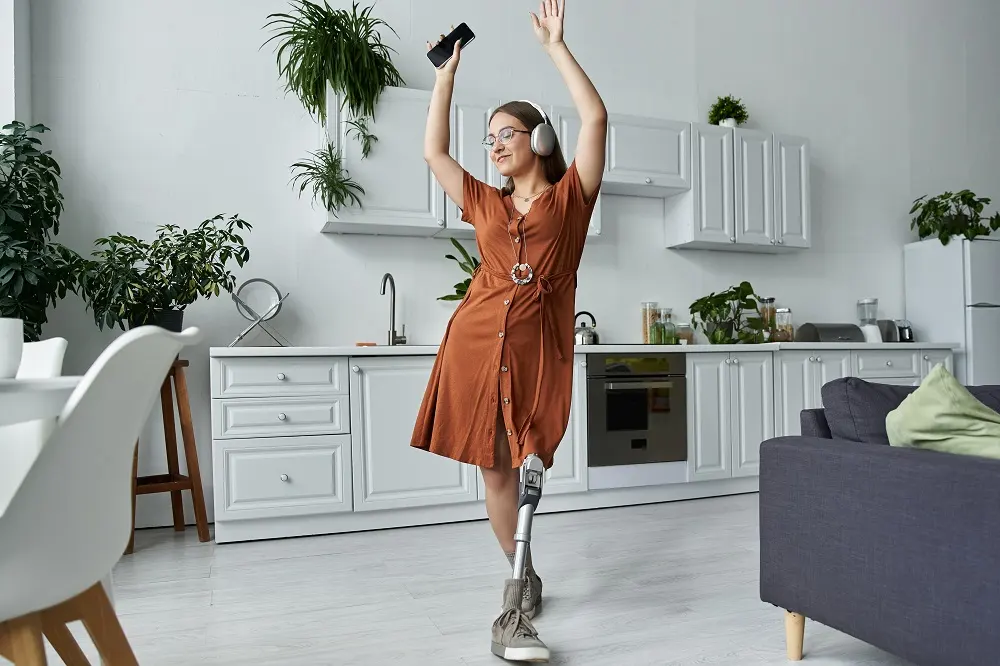
Physical and mental readiness are both needed to ensure prosthetic limitations don’t stand in the way of dancing again. Strategic conditioning is a great place to start as it develops the strength, flexibility, and neural adaptation required for fluid movement across any dance floor.
- Core power development: Rotational planks, medicine ball work, and suspended trainer exercises build the central stability that anchors every turn.
- Prosthetic leg balance progressions: Static holds advance to dynamic reaches, teaching your nervous system to interpret prosthetic feedback as movement data.
- Hip mobility sequences: Contract-relax stretching and multi-planar movements unlock the range required for Latin hip action and ballet extensions.
- Upper body dynamics: Resistance band patterns and bodyweight flows create the frame strength needed for partner connection.
- Dance-specific endurance: Interval training mimicking performance demands — such as 30 seconds of intense movement followed by brief recovery — builds stamina.
Beginning dancers often discover that 15-minute focused sessions yield better results than hour-long struggles. Your prosthetist can map specific exercises to your componentry to help you reach your performance goals. The residual limb requires special attention during this building phase, as new movement patterns challenge tissue in unexpected ways.
Exploring Dance Styles with Your Prosthesis
Each dance form offers challenges, and specific prosthetic adaptations are needed. With such diversity in movement styles, every dancer can find their perfect match.
Ballroom Dancing: Architecture in Motion
Partner dancing creates a support system through physical connection. For example, the geometric patterns of waltz and foxtrot provide predictable progressions, while your partner's frame offers stability during weight transfers. This structured environment allows prosthetic users to develop timing without battling balance.
International Standard styles emphasize smooth traveling movements that work well with prosthetic mechanics. American Smooth adds open positions and theatrical elements, letting dancers showcase their artistry while maintaining partner support when needed.
Latin Dance: Pulse and Power
Let salsa transform rehabilitation into celebration. The style emphasizes isolated hip movement and retrains proprioception.
Bachata's closer embrace provides more stability for newer dancers, while merengue's marching movements are ideal for those with limited ankle flexibility.
Contemporary and Modern Movement
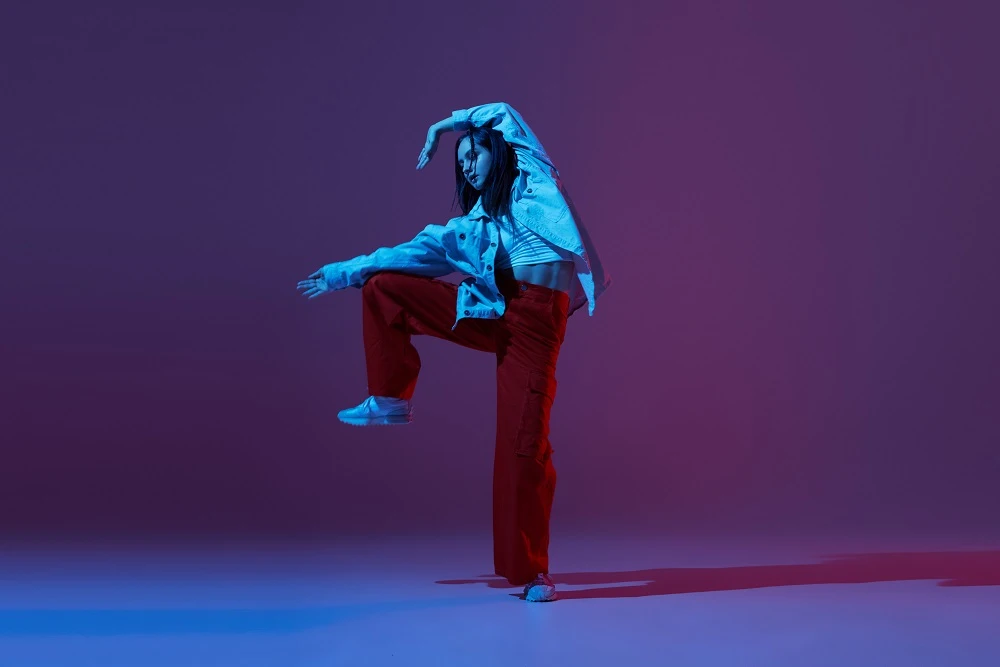
Contemporary dance focuses on individual expression over technique. This freedom allows prosthetic users to develop movement vocabularies that highlight their unique capabilities rather than hiding differences.
Floor work evolves organically — some dancers perform traditional rolls and slides, while others create entirely new transitions. Contact improvisation partnerships explore weight-sharing possibilities, with prosthetics adding interesting dynamics to lifts and counterbalances. The style emphasizes authenticity over perfection, creating space for every body type.
Ballet: Discipline and Innovation
Classical training sharpens proprioception and alignment like no other dance form. Barre work provides unilateral support while developing the muscle patterns that improve daily function. Center floor combinations challenge balance, from simple tendus to turning sequences.
Recent innovations in prosthetic design enable pointe work that was previously considered impossible. Specialized ballet feet maintain a permanent relevé position, actually allowing longer balances than human ankles can sustain. These developments open professional performance opportunities that were once closed to amputees.
Hip-Hop and Street Styles
Urban dance celebrates individuality and innovation — perfect for dancers creating signature moves around their prosthetics. Breaking crews include members who incorporate prosthetic spins and freezes impossible with biological limbs. Popping and locking emphasize muscular control over flexibility, playing to prosthetic users' strengths.
Imperfection is always welcome. The culture's emphasis on personal style over technical perfection is appealing to adaptive dancers. Battles and cyphers celebrate creativity, and crowds love originality regardless of how movements are achieved.
Prosthetic Considerations by Amputation Level
While returning to dance is possible, it’s important to be strategic when selecting and adjusting the prosthetic device. The team at PrimeCare can ensure the right device fits properly.
Above-Knee Considerations for Dancing
Hip-initiated movement characterizes above-knee dance technique. Without biological knee control, dancers develop exceptional hip mobility and core engagement, often surpassing typical dancers in these areas.
Microprocessor knees transform above-knee dancing through real-time stance and swing adjustments. The Ottobock Genium offers specific activity modes — switching between waltz and salsa settings optimizes hydraulic resistance for each style's demands. Some dancers prefer mechanical knees for their predictable response during repeated choreography, although adaptability may not be as high.
Socket design determines spinning capability. Vacuum systems prevent pistoning during jumps while allowing controlled rotation for turns. Flexible inner sockets accommodate the dramatic muscle shape changes that happen during deep pliés or lunges. The interface between flesh and carbon fiber requires careful attention — even a gap of millimeters can destroy balance and control.
Below-Knee Adaptations for Dancing
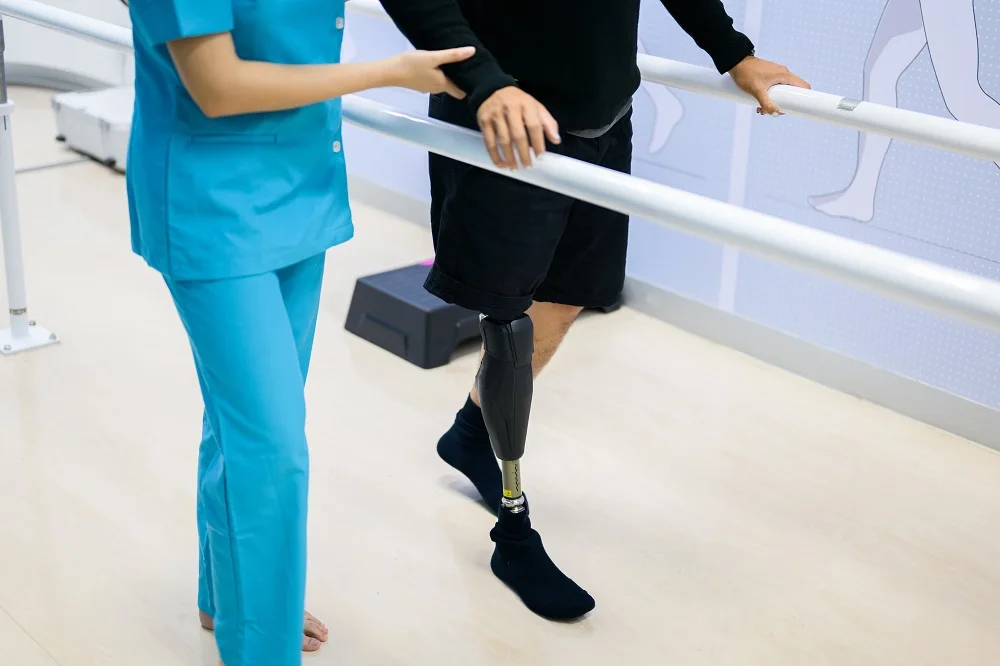
Preserved knee function offers below-knee amputees more intuitive movement patterns; however, the absence of an ankle requires creative solutions. Traditional relevé becomes impossible, so dancers develop alternative aesthetics.
Prosthetic feet designed for high activity transform landings into launches. Some dancers maintain multiple feet — a responsive blade for jumping and a stable foot for balance work.
Socket suspension affects every movement quality. Elevated vacuum systems maintain a close limb-prosthetic connection during fast direction changes. While pin locks feel secure, they may limit rotation. Suction suspension balances hold with freedom. Your prosthetist will work with you to fine-tune suspension based on your primary dance style and skill level.
Getting Started on Your Dance Journey
Before you step onto the dance floor, make sure you’re prepared both emotionally and physically.
- Schedule a dance-specific prosthetic evaluation: Tell your prosthetist exactly which movements you want to achieve — pirouettes require different alignment than salsa steps. Bring dance shoes to the appointment, so the heel height is adjusted properly.
- Start with individual instruction or adaptive programs: One-on-one lessons let you develop techniques specific to your prosthetic before managing group dynamics. Many studios offer discounted trial lessons — use these to evaluate instructor compatibility.
- Research instructors' adaptive experience: Don’t be afraid to ask direct questions to get honest answers: "Have you taught students with prosthetics before?" "How would you modify a chassé for limited ankle flexion?" Their responses reveal both knowledge and attitude.
- Choose forgiving dance styles initially: East Coast Swing's bouncy basic accommodates balance adjustments. Social waltz allows controlled movement at your chosen speed. Save Argentine Tango's precise footwork for after you've built foundational skills.
- Leverage technology for connection: Online communities offer 24/7 support when local resources are limited.
- Record practice sessions from multiple angles: Video reveals weight distribution patterns, prosthetic positioning, and movement habits you can't feel internally. Review footage weekly to track progress.
- Maintain footwear consistency: Your prosthetic alignment matches specific heel heights — switching between flat jazz shoes and heeled Latin shoes requires prosthetic adjustments. Choose one style and perfect it before trying others.
Progress isn’t always linear. Remember, professional dancers spend years developing their art; prosthetic users simply add another technical element to master.
Safety First: Protecting Yourself While Dancing
The right preparation prevents most dance-related setbacks. These protocols protect your body while maximizing your time in the studio:
- Monitor residual limb health obsessively: Post-practice inspection catches problems before they sideline you.
- Graduate warm-up intensity: Work on joint mobility, then activation, then rehearsal-speed movement.
- Maintain optimal hydration: Dehydration shrinks residual limb volume, destroying socket fit mid-performance.
- Select appropriate surfaces: Marley floors forgive; concrete punishes every landing.
- Schedule component maintenance: Preventive service beats catastrophic failure during performance.
- Respect pain's intelligence: Discomfort is a sign that rest or adjustment is needed rather than pushing through the pain.
- Progress duration methodically: Adding 10 minutes weekly builds sustainable practice habits.
- Pack redundant supplies: Extra liners, socks, and Allen keys prevent missed opportunities.
Communication is the best way to create safety networks. Partners need to know your balance points, while instructors must recognize your fatigue signals. Your prosthetist is no different; they should hear about new movement challenges right away. Most injuries result from ego overriding wisdom — dancers who honor their bodies' feedback enjoy decades of movement.
Dancers' Stories That Inspire Movement

There’s proof all around us: dancers and other celebrities with prosthetics perform professionally, compete internationally, and teach the next generation. Their paths showcase possibilities while respecting each person's unique journey. Below are some examples to inspire you.
Amy Purdy: Redefining Possible
Bacterial meningitis claimed Amy Purdy's legs below the knees at 19. She decided immediately that dancing would continue. Her strategic prosthetic choices — basic SACH feet for smooth dances, advanced carbon fiber for explosive Latin movements — demonstrate technical mastery beyond simple inspiration. Television audiences watched her push artistic boundaries, not overcome disability. Follow her journey on Instagram where she shares training videos and performance highlights.
Professional Evolution: Adrianne Haslet-Davis's Return
The Boston Marathon bombing interrupted Adrianne Haslet-Davis's professional dance career for exactly 200 days. MIT researchers built her a bionic ankle specifically for dance demands. Her first public performance post-amputation proved that technology paired with determination results in possibility. She continues performing and teaching, showing that "professional dancer with a prosthetic" needs no qualifier. Watch her latest performances on Instagram.
Your Movement Story Starts Now
The question shifts from "Can you dance with a prosthetic leg?" to "Which style calls to you first?" Wedding celebrations, cultural festivals, fitness goals, professional ambitions — each motivation leads to the same studio door. Your prosthetic isn’t a setback; it becomes your partner in discovering what your body can accomplish.
PrimeCare engineers possibilities throughout Las Cruces and New Mexico. Our prosthetic specialists translate your movement dreams into technical reality — selecting components that match your ambitions, crafting sockets that move as extensions of your body, adjusting alignments until every step feels natural. We’ve helped countless dancers find their footing and their confidence through our passionate, tailored prosthetic services.
Ready to write your dance story? Contact us to begin crafting prosthetics that perform as dynamically as you do!

.svg)
.svg)


